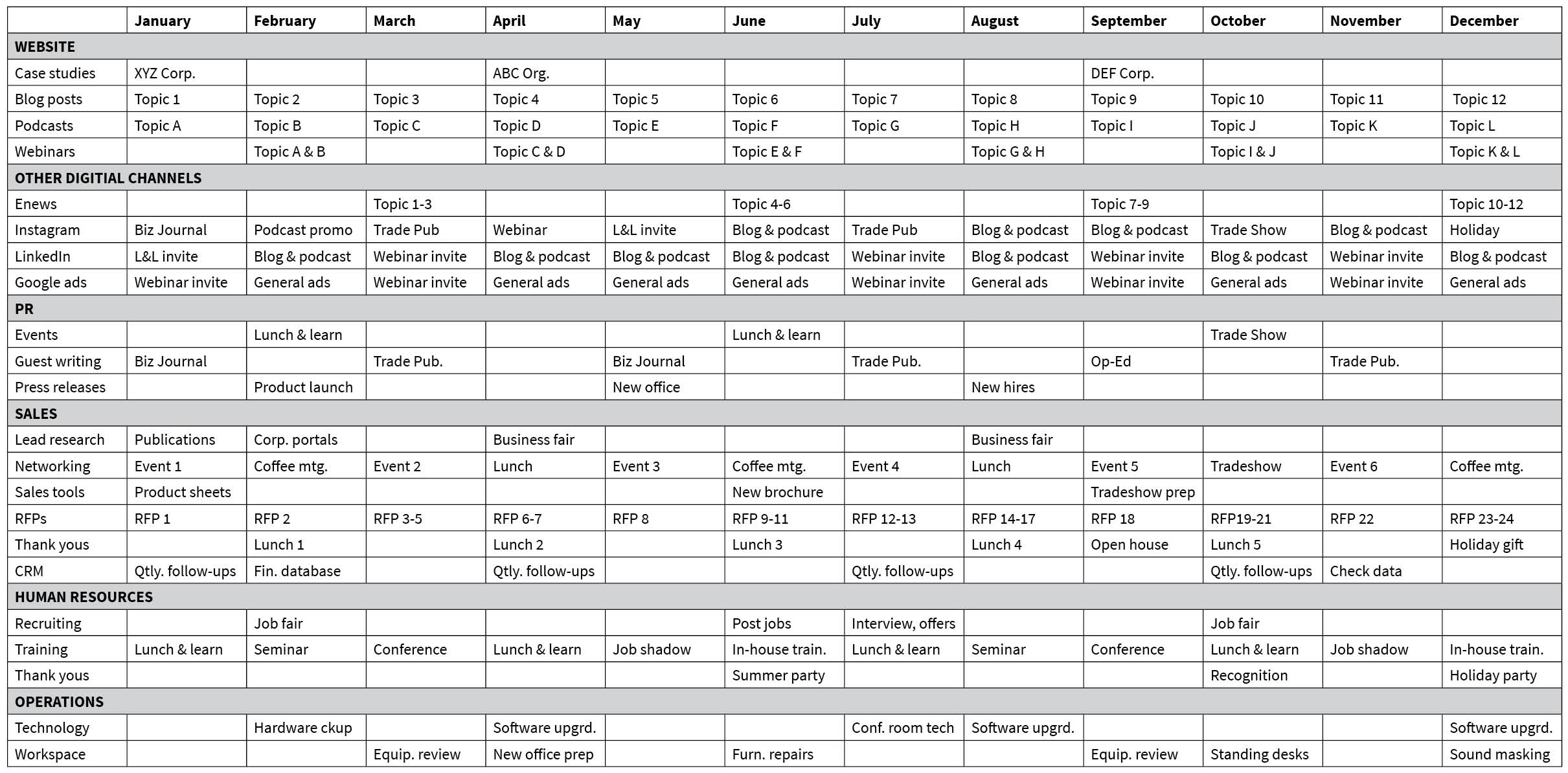Connect Your Editorial Calendar to Your Brand
A simple way to make sure your marketing content and your business initiatives are infused with your brand’s purpose.

Starting the year with a plan is always a good idea. In many organizations, those plans vary by department. Everyone has their own goals and tactics to achieve them. Having a master calendar that connects activities to purpose gets everyone on the same page.
Traditional editorial calendars are simply a map to your year, outlining what your marketing, sales, and branding activities will be. If you add in operations, R&D, customer service, and other business goals to this calendar, you can infuse your brand purpose throughout your organization. Connecting each silo of your business through brand makes it stronger and more authentic.
How to start
For small- to medium-sized businesses in particular, this doesn’t need to be complicated. A simple spreadsheet with the months or weeks of the year across the top and categories of activities along the side will get you started.
Think about what major categories make sense for your business: website, other digital channels, sales or new business, PR, customer service, operations, R&D, employee education, etc. Then divide those categories down further. Your PR section might include events, speaking engagements, press releases, pro bono work, etc. Your sales section might include research, networking, RFPs, client gifts, thank you lunches, etc.
For each week or month of the calendar, you now have blank spots to fill in the activities you plan to accomplish for the year.
Evaluate assets and seek connections
Now to fill in the blank spots with action items. First, you need to think about your overall purpose as a business and how each of these activities can support that. Let’s say you are an IT company and your brand purpose is to empower small businesses to grow. Each action should be focused on the right audience and the right topic. Writing blog posts about enterprise-sized organizations doesn’t fit. An event focused on networking a small remote team fits perfectly.
Second, you need to assess what kind of content you can create and who will create it. What are your assets? Do you have experts who can create relevant content such as blogs, videos, podcasts, Instagram photos? Do they have the skills and tools needed to make it look and sound professional? What kind of budget do you have for education? Can your employees go to one event a week or one a quarter? Make sure to make specific assignments for each task so there is accountability. If no one is officially responsible, the job won’t get done.
Third, see how each action item ties to the others. For example, if an employee goes to a seminar, that can be translated into a lot of other action items. They could write a blog post on what they learned. They could network with potential clients and get them into the CRM system. They could offer to present at the next event. They could ask a speaker they saw to be a part of a podcast or do a lunch and learn for other employees. They could take photos of points of interest at the seminar to share on social media. The possibilities are endless.
Be open to change
Having a plan in place is critical but straying from that plan when necessary is also important. Current events, trends, changes in your marketplace, and changes in your staffing situation can all affect what you can accomplish and what is effective.
Put some goals in place for engagement with each activity and track them. If a specific networking group isn’t producing leads, switch to another one. If an ongoing client only provides small, difficult projects, don’t nurture that relationship. If no one is listening to your podcast, adjust the content, market it differently, or stop spending your time on it entirely. Your calendar should be a living, breathing document on which everyone can provide input.
Using these simple techniques to put together a game plan will help you stay on track and connect your business silos. Working toward a common goal and seeing what everyone else is bringing to the table, will increase communication in your organization. The fruits of that labor will get your brand purpose noticed on the outside. A cohesive culture results in a strong brand.

Welcome aboard!
Using your brand during the onboarding process with new employees.
Put Your Brand Story on Repeat
To make a connection with your customers you have to get repetitive.
5 Must-Haves for a Successful Brand
What you need in place to make your brand soar.



